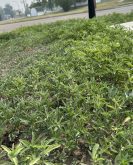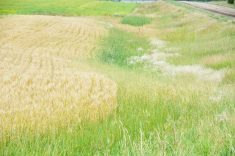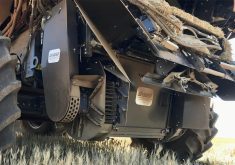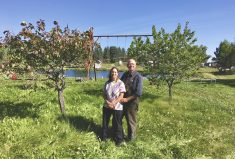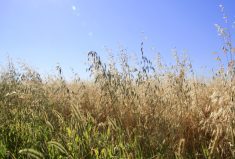So far uncommon to Alberta, puncturevine has all the makings of a potential headache to you and me, alike.
What started as an annual herb in southern Europe has started spreading into Canada (in British Columbia and Ontario). Like most other weeds, this plant prefers areas of disturbed, bare ground and grows as a summer annual in colder climates — which makes it a perfect invader for Alberta.
This low-lying, dense mat-like plant grows very deep taproots. While the above-ground leaves of the plant can be killed by frost, yearly resprouting can occur from these deep roots. Seeds of puncturevine can germinate when spring temperatures and moisture are plentiful. Its greenish-red stems covered in hairs with a yellow, five-petal flower make this weed easy to identify.
Read Also

Hail research hopes to benefit potato growers
Alberta research scientist measures hail storm and heat dome affects on potato crops
The primary control method is early detection and preventing seed production and dissemination. Seeds, which are hard and have two or three sharp spines can puncture feet (humans and livestock) and bicycle tires. They can also bury deep into the soles of footware, only to release later and increase its spread. Seed production is quick, so control efforts are needed through the growing season.
Currently no selective herbicides are registered for puncturevine. As this plant is toxic to animals, this invasive plant should never be considered as forage. Repeated, shallow cultivation before seed production can be the most effective means of control.
For more information on this or any invasive plant, contact your local Agricultural Fieldman or the Alberta Invasive Species Council.
Aimee Delaney is a Conservation assistant for Red Deer County.



